Water Bushcraft
How to find, purify and sterilize drinkable water in the wild

Water is usually very high on the priority list, if not the top.
Going just one or two days without water can be debilitating. Don't wait until you run out to determine how to procure more. It is needed often and in high quantities.
Never wait until you are dehydrated to drink more water, if you can avoid it. Stay ahead of the curve by gorging on clean water when it's available. Even a moderately dehydrated person can suffer from lack of mental clarity and degraded physical ability. And often a severely dehydrated person experiences hallucinations and physical failures before death actually arrives. Dehydration also speeds up hypothermia and hyperthermia.
In the bush it is great to have a permanent water source that you can return to indefinitely. When on the move this is not an option so stock up as much as you can and drink to bloated before departing. When searching for a long term shelter location try to find one with a good clean water source nearby, preferably running fresh water.
Finding and sustaining water in the wilderness is an essential bushcraft skill. The difficulty of the task will depend on the environment, but there are several surefire methods.
Dehydration
The human body is about 75% water and it serves many functions, including keeping the body cool and at a consistent temperature and helping the nerves function.
If you have ever been dehydrated before, you may have noticed that the first sign was in some kidney pains. If you feel your kidneys hurting even slightly, this is a sign you need to drink water, and lots of it.
Another common first clue of dehydration is headache. In fact it is the most common reason for headaches in urban areas, where water is abundant. People just don't drink enough of it! Most people are somewhat dehydrated throughout the day even in big cities.
The cells in your body need to expand and contract to maintain the right core body temperature. When you are dehydrated they cannot perform this function, and so dehydration speeds up hypothermia and hyperthermia.
Conservation
You cannot avoid losing water from the body, though you can slow it down.
The average person loses 2-3 liters of water each day, largely just through breathing. Even someone resting in the shade all day will still lose about 1 liter per day. Sweating increases this loss significantly. Vomiting and diarrhea further increases water loss.
There are several tricks that will help you lower your rate of water loss from the body. For example, avoiding exertion and just resting, especially in the shade.
Food digestion requires water so if water is a concern avoid eating food. Fat and protein take more water to digest than carbohydrates and vegetables.
Don't drink alcohol and don't smoke, these increase water loss because they require the kidneys to use water for detoxification.
Avoid talking, and breathe through the nose to minimize water loss from the lungs and mouth.
In hot regions, travel at night and rest during the day, especially when the moon is full or you have a flashlight, traveling at night can be easy and pleasant.
Sterilization
You should always boil any water you find to kill any pathogens that could make you sick, except in rare occasions when you know the water is clean, for example a limestone seep or freshly melted glacier water.
If you are stuck with a plastic or wood container that cannot be heated to boiling, you can still kill the pathogens in the water by pasteurizing it. Heat the water to 150 degrees F (65 C) for about 20 minutes and it should be safe to drink.
You probably won't have a thermometer with you in the bush, but if the water burns your hand when you touch it it is probably hot enough. You may want to experiment at home to learn what 150 F feels like on your hand.
One way to bring water to a boil is by using hot rocks heated in a fire. This is useful when you have a container that cannot be heated directly on a fire. Drop several hot rocks into the container with water, until it boils. This works well in an assortment of containers, including hard plastic and dense fabric that is capable of holding water.
Be careful when heating rocks in a fire, some types of stones can break and send shrapnel flying when heated too quickly. Stones with water in them are especially likely to break or explode. Don't touch hot rocks with your hands, instead use sticks or other rocks to grasp them.
Almost any water can be sterilized and made drinkable by filtering and boiling it, except salt-water which requires distillation. You can also get store bought iodine tablets that will sterilize water without requiring heating.
Iodine tablets for water purification
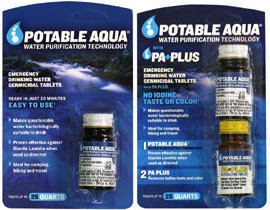
You can also disinfect water with normal household bleach, at a rate of 4 drops per quart or liter. So 16 drops per gallon of water. Be careful when messing with bleach, it can be dangerous. Don't exceed the recommended 4 drops per quart, though an extra drop or two probably won't hurt.
Another way to disinfect water is to simply let the sun kill the bacteria and pathogens with its ultraviolet rays. To do this you need a relatively thin layer of mostly clear water, no more than 6 inches deep, and let it sit in direct sunlight for a minimum of 6 hours, preferably a full day to be safe. When there is heavy cloud cover present you need to wait two days.
If the water is cloudy or colored, it needs to be filtered first, the water must be relatively clear for the ultraviolet rays to penetrate to the bacteria.
Third world country sterilizing water through solar radiation
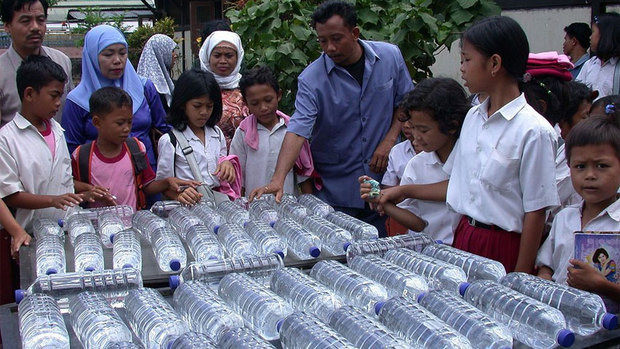
When you disinfect water, don't pour it back into a container that previously contained dirty water, there could be pathogens left in the residue of the container.
Metal water containers are ideal, and not plastic or other material that can melt or break. With a metal container you can collect water, boil it, and drink straight out of it.
100% stainless steel is the best material for a canteen
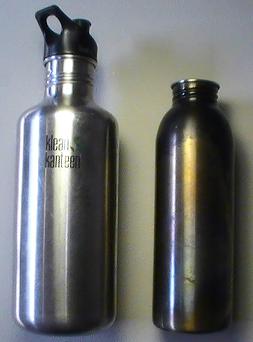
Gravity
When it comes to finding water, the most obvious place to look is at the lowest elevation of the surrounding area, such as valley bottoms, where it will drain, collect and pool.
Even if there is not obvious water present at such a location, digging into the ground may reveal some, which will pool in the hole you've dug. You may stumble upon a completely dry creek bed and think "what luck!" But don't give up prematurely, if you dig down into it you may find water.
Look for very green planty areas as a sign of water and avoid dryer, brownish looking plants and areas.
Water collects at the lowest elevations
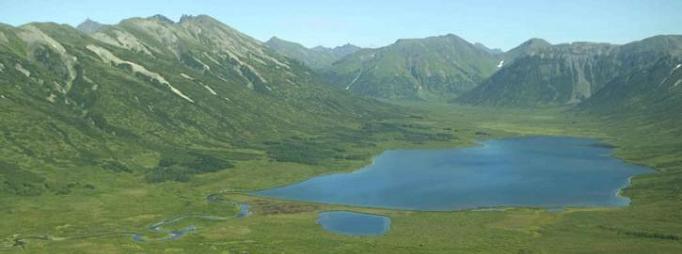
Rain
In places where it rains a lot or if there was a recent rain, you can often find water all over the place in nooks and crannies where it has collected. But it is always safest to boil any standing water you find unless you know it very recently came fresh from a rain.
When there are only small pockets of water that are hard to access, try making a straw out of a plant, many plants have hollow insides, Bamboo is especially useful and it grows in many parts of the world. You can cram some grass, sand, and/or clothes fabric into the Bamboo straw to make a mediocre filter which will filter out big particles but not bacteria or pathogens.
Another trick to access a pocket of water is to put some fabric like your cotton shirt in it and let it soak it up, then wring it out into your mouth, or simply put it inside your mouth and suck the water out.
Dew
Morning dew can be a good way to collect water, especially in regions where the days are hot and the nights cold. The hot temperature causes the air to absorb a lot of moisture, and when it cools the air cannot hold it so it condenses into dew.
Construct something with as much surface area as possible so that it will collect a lot of dew and drain into a container. A big tarp works great for this. Tree bark is often water proof and capable of containing water without absorbing it.
Clothes can be used to sponge up water droplets and wrung out into the mouth or boiling pot. A great way to collect morning dew is to wrap clothes, preferably clean, around your legs or ankles and walk through dewy grass. The clothes will soon be soaked.
Groundwater
Digging holes in the ground can be an effective way to access water. This works best at low elevations near dry creek beds and/or around lush green plants.
Dig a hole a foot or two deep, when you reach moist ground you are in luck. Simply wait a short while and the hole will start to fill with groundwater. This is a virtually infinite supply of water when you find it, unless over some days a drought occurs.
Ground water filling a hole
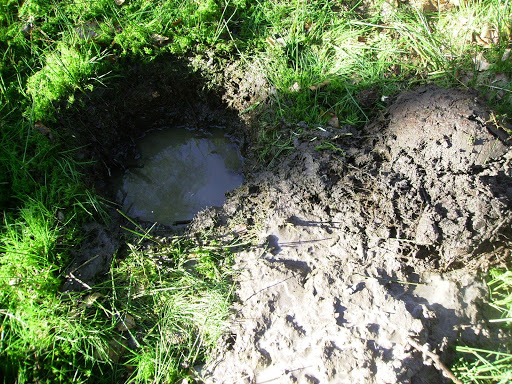
On saltwater coasts if you dig above the high water mark there is often a couple inches of fresh water that floats above the heavier saltwater. You can also try digging a hole in the ground about 300 feet or more inland and you can often access groundwater this way. The farther inland you go the less salty the groundwater will be.
Avoid water that tastes salty, unless you can distill it to remove the salt. Drinking saltwater will rapidly increase dehydration and lead to death.
Vegetation
When searching for water it is always a good idea to look for green vegetation. Especially in dry regions, if you spot a concentrated area of green foliage you know there is water there. Even if no obvious source is found, it is still a good location to try digging into the ground to see if water will pool up.
Green plants spotted on a rock wall means there is probably a seep which will have great drinking water and probably doesn't even need to be sterilized as it has been filtered through layers of rock.
A common and reliable way to produce water is by tying a transparent plastic bag over some green leaves. Evaporation during the day will collect in the bag. This is essentially an infinite source of water, though slow in production, as long as you have a waterproof bag.
Choose bushy branches with a lot of healthy green leaves for this trick. Make sure the bag is angled so there is a good-size pocket for the water to collect in at the lowest point, you don't want it running out of the top.
This trick will even work to a limited degree with freshly cut foliage.
Collecting water in a bag through green leaf evaporation
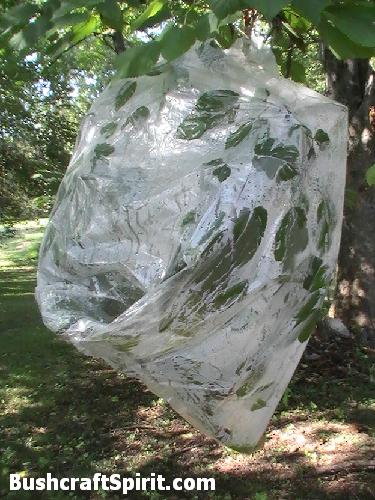
Tree Tapping
Yet another great trick for collecting water is by tapping a tree. Cut or stab into the trunk of a large tree, slightly upward and about an inch deep, then water will slowly drip out. This trick works best directly above a big root.
Place a stick, blade of grass, or something similar (called a spile) into the bottom of the cut, sticking out and angled down. The water will run down it into your container.
This tree "sap" will even contain trace minerals and sugars, which are very important to the functioning of the human body.
Bushcraft tree tapping
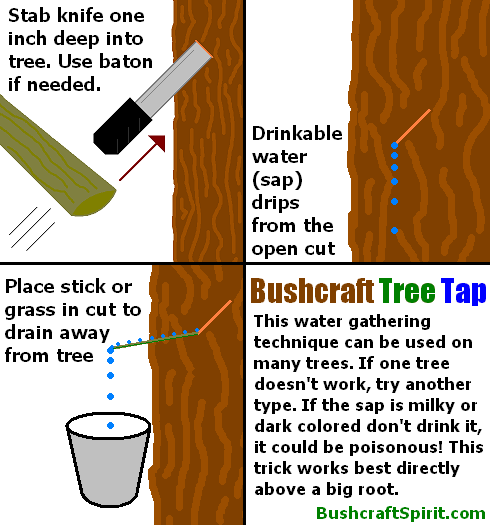
This bushcraft tree tapping technique can be used on many types of trees, including Birch, Maple, Walnut, Box Elder, Hickory, Palm, Sycamore, Poplar, Hackberry, Elm and more.
In fact, your classic maple syrup is created this way from Maple trees. The water leaked from a Maple tree is boiled down until the sugars are heavily concentrated, and thus you have maple syrup.
Avoid tapping evergreen trees, they usually produce a thick sap which is not useful for hydration.
Some trees do not hold enough water for this trick to work, but you can usually find a tree in the area that will. Just try different trees until one produces a drip, but remember, if the sap is milky or heavily colored do not drink it! It is probably harmful.
Water Vines & Bamboo
Large, thick bamboo stalks can be a good source of water as they often store it in their hollow stems. Simply cut into it and drink, the water is safe as is. Smaller bamboo stalks can be cut into straws for easy water access.
Drinking water from Bamboo
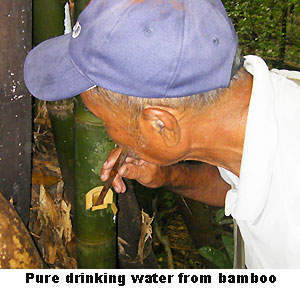
Image courtesy of paddleasia.com
Bamboo can also be made into a canteen with its large hollow segments. Cut the top off one segment and you essentially have a "drinking glass". Find a slightly smaller segment of bamboo that will just fit into the drinking glass like a cork.
Of course we've all heard of the good ole' water vine.
To get water from a vine find a thick one with rough bark, thin vines don't yield much. Cut the vine off high first then cut it low. Simply let it drain into your mouth or a container. Don't put the vine in your mouth as it can irritate it. Hold the vine horizontally to stop it from draining.
Beware any vine juice that is sticky, milky, or bitter tasting, it is probably poisonous, don't drink it!
Animals
Animals can be a great indication of nearby water locations, and there are several techniques to take advantage of this.
First of all, grazing animals such as cow, deer, moose etc. usually never stray too far from water, unless they are migrating to avoid a dry season. Carnivores on the other hand are not necessarily a reliable indication of water, since they can go long periods without drinking since they get moisture from prey animals.
In any case, if you stumble upon a game trail, follow it downhill, or in the direction that two game trails converge, it will likely lead to a water source such as a pond or river. But be careful where dangerous predators live, they often hang near watering holes to ambush prey.
Birds can be an interesting tool for finding water if you pay careful attention to their actions. Common grain, seed, and vegetarian eating birds such as blue jays, cardinals, finches and pigeons generally stay close to a water source. They usually drink at dawn and dusk.
When heading towards water these birds will fly straight and low, and when leaving a water source after drinking they will fly away from it from tree to tree, resting frequently since the water weighs them down and makes it harder to fly.
Water birds such as ducks, geese and heron can fly long distances without stopping at water so they are not necessarily reliable. Predator birds such as hawks and eagles also go long periods without drinking water since they get it from their prey.
Grain and seed eating birds stay close to water



Insects can be great indicators of water, since they cannot travel long distances away from it without risking dehydration. For example, most flies stay within 100 yards of a water source.
A column of marching ants is likely to be heading towards water, perhaps just a small pocket of some trapped in a tree or crevice.
. . .
Water that is undrinkable is useless. Dirty water with diseases and pathogens can make you very sick and even kill you. It is critical that you know how to make any water suitable for drinking by filtering, sterilizing, and distilling contaminated water.
Distillation
Solar stills are a great way of obtaining water, either by distilling contaminated water or by sucking the moisture out of the ground or freshly cut green leaves.
To make a solar still, dig a hole a foot or more into the ground and make it wide. Place a container in the middle that will collect water. Place a tarp or sheet, preferably clear, over the hole and pin it at the rims with stakes, rocks, or dirt. Keep it a little loose and place a small stone in the middle directly above the container underneath.
As time goes by water will evaporate out of the dirt, leaves, or contaminated water and collect on the tarp, then drain down into the container.
This is especially effective where temperatures swing a lot, for example in a desert region which is very hot during the day and cold at night. The hot temperature causes the air to take on a high saturation of water, or high humidity, and when the temperature cools, the air cannot hold as much moisture and the water must leave the air and thus condenses.
If available, put a long drinking tube into the clean water collection container and run it outside of the solar still. This way you can drink the fresh water without disturbing the contraption. A solar still like this can be used to turn saltwater, contaminated water, or even urine into pure drinkable water.
How a solar still works
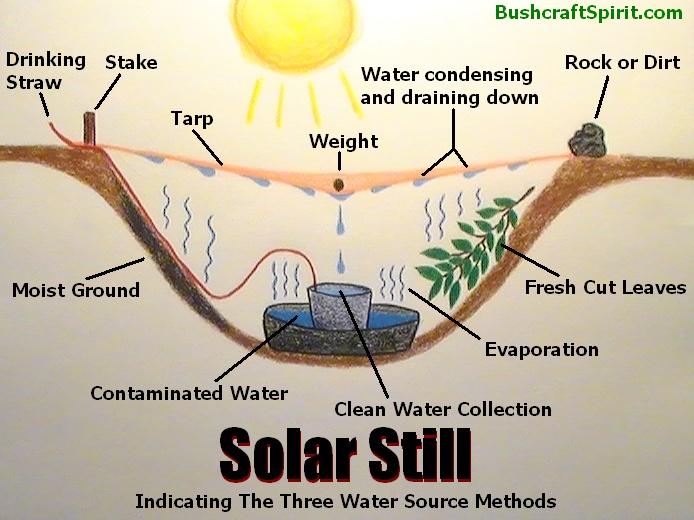
A faster way to obtain fresh drinking water from undrinkable water is a "fire still". If you can capture the steam from a boiling pot of bad water you will have beautiful fresh water.
Boiling contaminated water in an air tight can with a tube running out of the top is the best method, the steam will condense in the tube and drip out fresh water. Or you can put a cover over an open boiling pot and angle it so that when the steam condenses on the cover, it will flow into a specific spot where a container is waiting to collect it.
A second, very easy method for capturing evaporated water is to make a tripod out of some sticks, put it over the fire and hang an absorbent fabric on it, such as a cotton shirt. As the water evaporates from the pot on the fire, it will catch on the fabric and be absorbed, then you can simply wring out the fresh water.
Believe it or not, drinkable water can actually be extracted from virtually anything that has water in it! Things like mud, urine, poisonous tree sap, blood, foliage, seawater and even feces can all be a source of clean water if you simply use a still to evaporate the moisture out and then collect it.
Filtering
When dealing with dirty water, it is a good idea to filter it before boiling it to remove particulates of animal waste and other sediment, which can harbor viruses and bacteria.
You can easily make a bushcraft water filter with just some common ingredients like gravel, sand, and charcoal from a fire. The layers that the water passes through should go from coarse to fine (heavy porous to less porous).
Having every filter layer illustrated below is not necessary. Finest layers are the most important, especially the charcoal which is the most effective and can absorb chemicals.
Bushcraft water filter
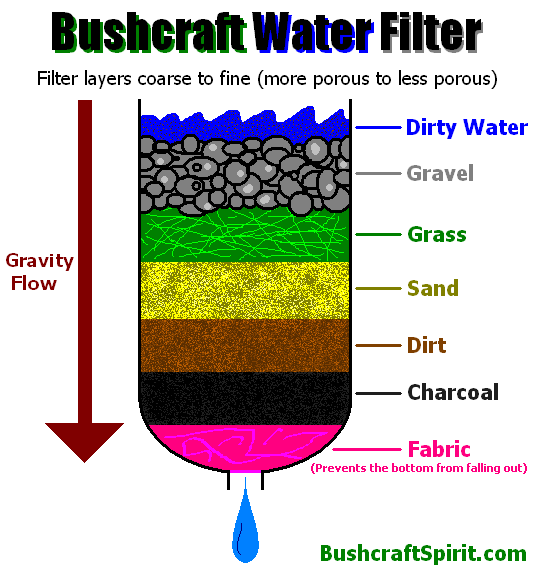
Another method for filtering dirty water is to dig a hole in the ground a couple feet away from the source of contaminated water, such as a pond contaminated with animal feces. Water will usually fill the hole slowly, being filtered by the ground between the hole and water source.
Once the water in the hole stops rising, let it sit for about 30 minutes for any sediment to sink to the bottom. This filters out the heavy contamination and possibly some parasites, but should still be boiled or pasteurized for absolute safety.
Filtering in general will NOT remove chemicals from water. Water must be distilled to separate it from all chemicals.
If you find a stream or body of water, the best way to fill up your water bottle is to hold it a few inches under the surface facing downstream. This is the cleanest section and avoids stuff that floats on the top and the sediment towards the bottom.
Miscellaneous
Where there is an abundance of snow, water is not even a concern. You can always eat snow if you have to, but be careful not to let it drop your core body temperature. If you are active like traveling or working, then eating snow is a lot less dangerous than if you are just sitting down ready for a long night at camp.
Melt snow if possible before drinking, such as in a container by a fire. If you cannot melt snow, at least let it melt in your mouth before swallowing, or try to melt it using the outside of your body's heat, such as putting a snow filled container in a jacket pocket. This will help prevent it from dropping your core body temperature, which is the most important factor when surviving in the harsh cold. Once your core body temperature starts to drop, that's when hypothermia comes a knockin'. If you feel your core body temperature dropping, then exercise! Squats are especially effective.
Avoid water that has no green plants growing around it, has multiple bones or dead animals nearby, or has chalky rings around it. This is probably a sign of chemical contamination. Boiling, bushcraft filtering, and iodine water treatment will NOT affect the harmful chemicals in the water! It must be distilled to remove chemicals.
As far as drinking urine goes, it is best to avoid it as it contains salts and will likely dehydrate you more. The only possible exception to this is if you produce the urine while you are thoroughly hydrated and your urine is very clear with little or no coloration. Of course, if you are thoroughly hydrated then there is probably a water source nearby, so it is a bit of a catch-22.
If you are dehydrated, your urine will definitely be loaded with salts and it will only dehydrate you further if you drink it. If you intend to drink your urine, only do so if it is very clear, and only for "one cycle". The darker your urine is, the less hydration value it will have. However, if you can manage to distill the urine then you can get 100% pure drinkable water out of it.
It turns out there are many, many ways to find and gather water in the bush, especially if you have the knowledge that will lead you in the right direction. Along with education, ingenuity and common sense go a long way in the search for water.
As always with bushcraft living and wilderness survival, the right state of mind is the most important component.
Continue to Survival Kit...
Leave A Comment
Add Comment
Wilderness
Survival Gear
Fixed Blade Bushcraft Knife
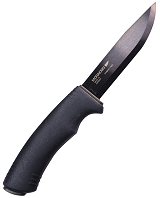
Ferrocerium
Rod Firesteel
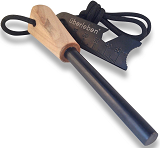
550 Paracord
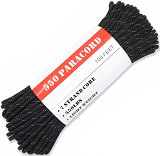
Stainless Steel Canteen
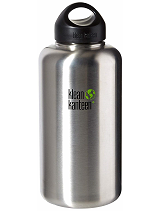
Waterproof
Tarp
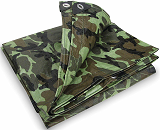
Multitool
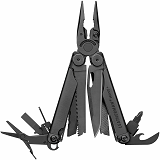
Stormproof Matches
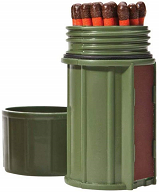
Folding
Hand Saw
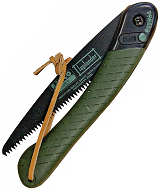
Stainless Steel
Pot
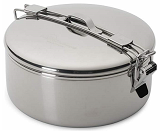
Waterproof
Rain Poncho
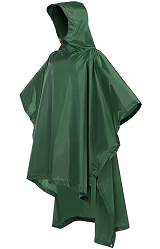
Water
Purification
Tablets
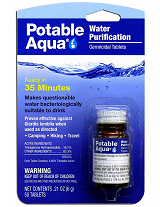
Kukri Machete
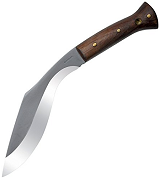
Magnifying
Lens Firestarter
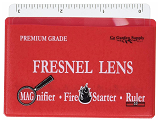
Duct Tape
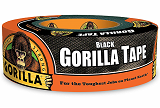
Compass
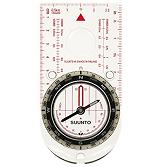
Water Filter
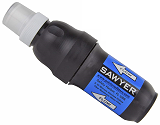
Magnesium
Stick Firestarter

Blade
Sharpener
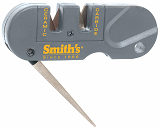
Firestarting
Tinder
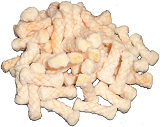
Fishing Kit
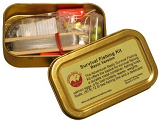

Survival Gear
Fixed Blade Bushcraft Knife

Ferrocerium
Rod Firesteel

550 Paracord

Stainless Steel Canteen

Waterproof
Tarp

Multitool

Stormproof Matches

Folding
Hand Saw

Stainless Steel
Pot

Waterproof
Rain Poncho

Water
Purification
Tablets

Kukri Machete

Magnifying
Lens Firestarter

Duct Tape

Compass

Water Filter

Magnesium
Stick Firestarter

Blade
Sharpener

Firestarting
Tinder

Fishing Kit


Comments (3)
the water filter was a good thing to know and the drinkable water that comes out of the tree was good to know too
About eating snow, you spread out some good information and, one thing is incorrect (not recommended).
Melting snow IS always best, through fire, solar or body heat. Eating it is ok, as you mentioned, if you are working/walking or being active and is even good to ensure your body doesn't over heat. HOWEVER... Melting snow in your mouth before you eat is is not a good idea. It takes body heat to do so and yo have more at your core and keeping snow in your mouth for an extended period of time can cause more tissue damage than simply just eating it. There are lots of nerves in your mouth and throat and first, it just hurts after a while and it can cause temporary and possibly permanant damage to those nerves. So, though it may cause minor tissue damage and small cuts in the mouth to regularly eat melted snow, it's still better than "mouth melting." There is a lot of good information on your site. Don't forget to put some emphasis on mechanical injury & it's problems. :)
Lots of good info about drinking water in the wilderness